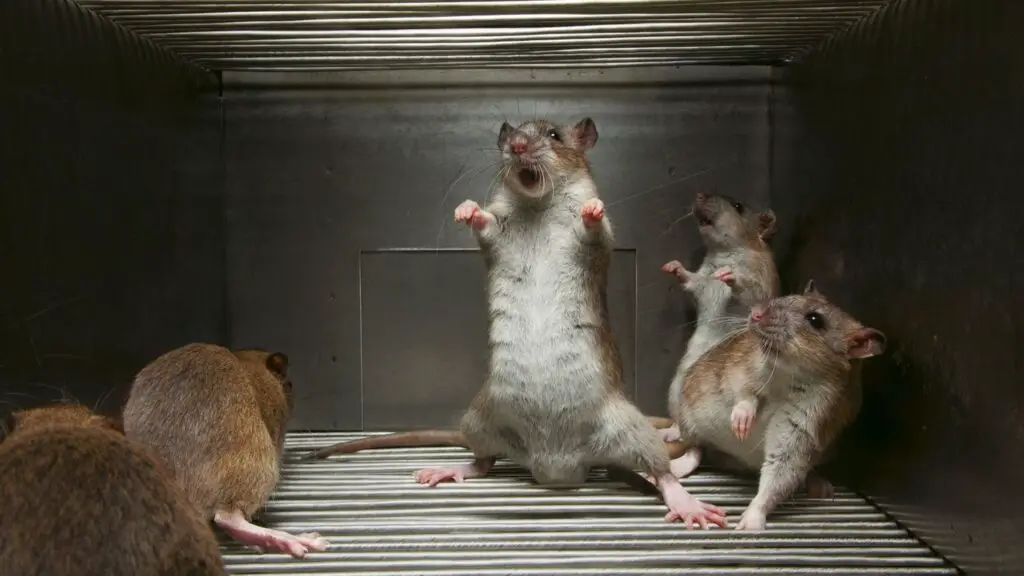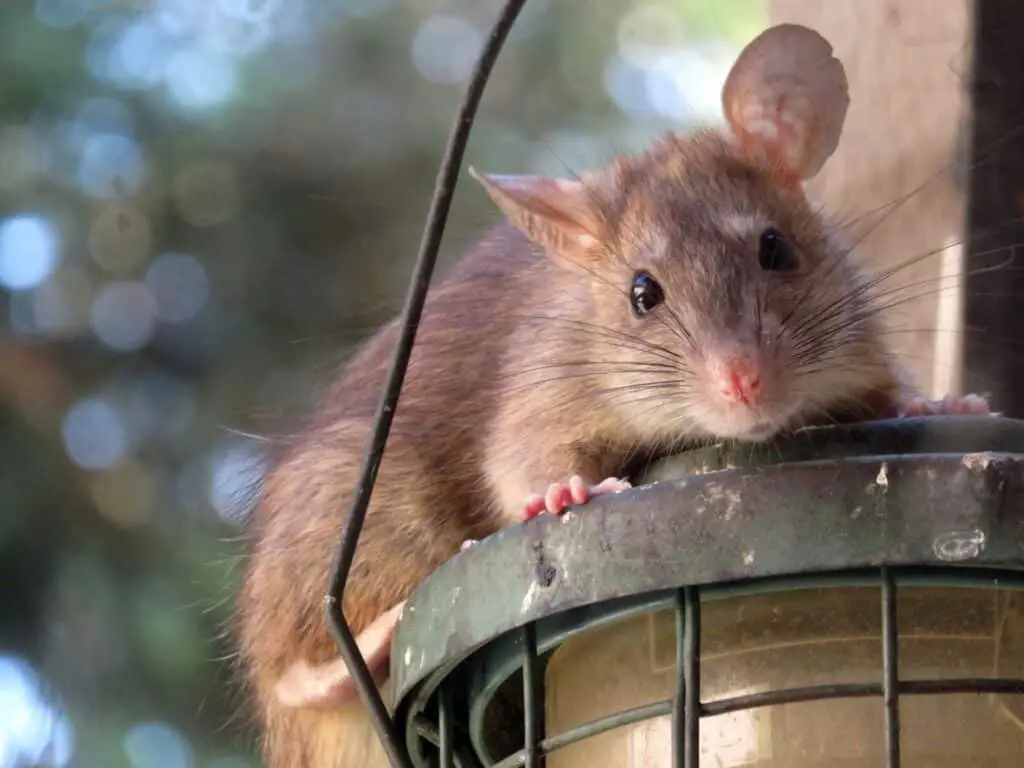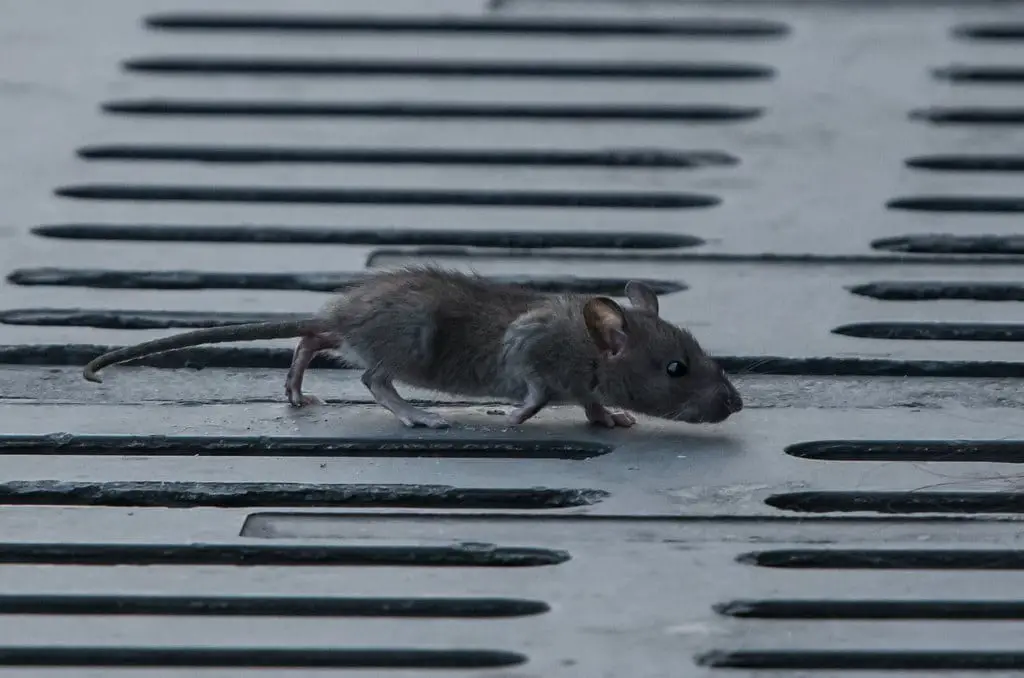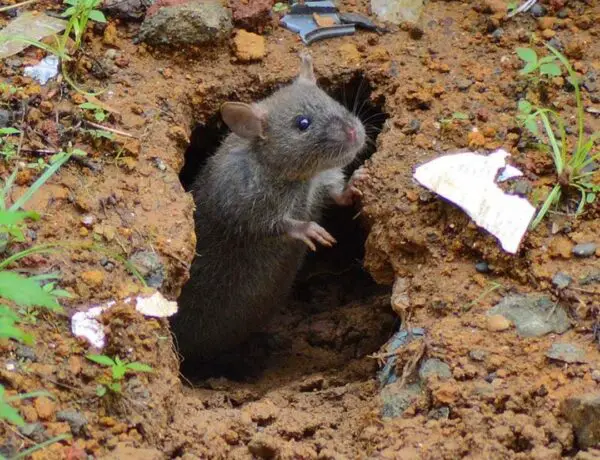Introduction
How To Get Rid Of Roof Rats: Large birds like owls are also predators of rats. If you have rats outside your house, you can build nest boxes to attract birds, and they can kill rodents and destroy exterior nests. Dealing with a roof rat infestation can be a challenging and unsettling experience for homeowners.
Roof rats, also known as black rats, are agile climbers that often find their way into houses through rooflines, attics, and wall voids. These unwelcome pests can cause damage to property and pose health risks through their droppings and urine. As such, understanding how to get rid of roof rats is essential for maintaining a healthy and pest-free living environment.
Roof rat control requires a combination of prevention, exclusion, and targeted extermination methods, all of which will be discussed in detail. Whether you’re facing a current infestation or seeking to fortify your home against future invasions, this guide will equip you with the knowledge and tools to reclaim your living space and ensure it remains rat-free.

What is the first step in getting rid of rats?
The First Step for Rat Control is Sanitation, Inspection and Exclusion. The first step is a complete inspection with proper sanitation and exclusion procedures. The next step is choosing between using rodent baits, rat traps, or a combination of both methods. Inspection is an essential first step in getting rid of rats.
The first step in getting rid of rats is to confirm the presence of an infestation. Identifying the signs of a rat infestation is crucial to take prompt action.
The key steps in this initial phase:
Signs of Infestation: Look for signs such as rat droppings, which are small, dark pellets typically found along their travel paths. Chewed or gnawed areas on food packaging, wires, insulation, and structural materials are also indicative of rat activity. Listen for scratching or scurrying sounds in walls or ceilings, especially during the night.
Visual Confirmation: If possible, try to visually confirm the presence of rats. Look for them at dawn or dusk when they are most active. Rats are shy and often avoid human contact, so spotting them can be challenging.
Inspect Entry Points: Examine your home for potential entry points that rats could be using. Check for gaps or holes in walls, vents, windows, and rooflines. Rats are excellent climbers and can access homes through these openings.
Outdoor Areas: Inspect your yard and outdoor spaces for burrows, nests, and signs of rat activity. Address any food sources or attractants, such as open garbage containers or pet food left outside.
Seek Professional Help: If you’re unsure or suspect an infestation but haven’t visually confirmed it, consider consulting a pest control professional. They can conduct a thorough inspection and provide expert guidance.
Once confirmed a rat infestation, you can move on to the next steps, which typically involve implementing control measures, sealing entry points, and choosing appropriate methods for rat removal, whether through traps, baits, or exclusion techniques. The key is to act promptly to prevent the infestation from worsening and causing further damage to your property.
What damage can rats do in your roof?
Some roof rats even chew through electrical wires, causing some appliances to stop working. If the cables become exposed, the electricity may short-circuit or worse, lead to a house fire. They can also cause water leaks and floods if they manage to chew through the PVC water pipes.
Rats in your roof can cause a range of significant problems and extensive damage to your home:
Structural Damage: Rats are notorious chewers and gnawers. They can damage wooden beams, electrical wiring, insulation, and even support structures in your roof. This can weaken the integrity of your roof and potentially lead to safety hazards.
Fire Hazard: Rats’ propensity for chewing on electrical wiring is a major concern. This behavior can expose wires, create short circuits, and increase the risk of electrical fires, posing a severe safety threat.
Contamination: Rats carry diseases and parasites, and their presence in your roof can lead to contamination. Their urine, droppings, and fur can spread pathogens, which can become airborne and affect the air quality inside your home.
Insulation Damage: Rats may use insulation materials for nesting, causing it to become compressed and less effective in regulating temperature. This can lead to increased energy costs as your heating and cooling systems have to work harder.
Odor Issues: The accumulation of rat feces and urine in your roof can produce foul odors that permeate your home, making it an unpleasant place to live.
Nesting Materials: Rats will gather materials for their nests, which can include items like insulation, fabrics, and papers. This can lead to further damage and disruption.
Noise Disturbances: Rats are active primarily at night, and their scurrying, scratching, and gnawing sounds in your roof can be a constant nuisance and disrupt your sleep.
A rat infestation in your roof is not merely an inconvenience; it poses substantial risks to your home’s structural integrity, safety, and hygiene. Addressing the problem promptly through rat removal and prevention measures is crucial to minimize the potential damage and health hazards associated with roof rats.
Can you get rid of rats naturally?
“Peppermint oil, citronella and eucalyptus essential oils in their pure form are all smells that rats will dislike. “A few drops of these oils in their pure form around the areas you know the rats have been should do the trick.” Alternatively, soak cotton wool in essential oil and place in rat traffic areas.
It is possible to get rid of rats naturally using a combination of preventive measures, repellents, and humane exclusion methods.
Some natural approaches to rat control:
Seal Entry Points: Start by inspecting your home for potential rat entry points and seal them with materials like steel wool, caulk, or wire mesh. Rats can squeeze through tiny openings, so be thorough in your efforts.
Remove Food Sources: Ensure that food and water sources are inaccessible to rats. Store food in airtight containers, clean up spills promptly, and secure garbage bins with tight-fitting lids.
Natural Repellents: Some natural substances are believed to deter rats, such as peppermint oil, vinegar, and cayenne pepper. Soaking cotton balls in these repellents and placing them near entry points or infested areas may help discourage rats.
Predators: Encourage natural predators of rats, such as owls, snakes, and cats, to frequent your property. Installing owl boxes or encouraging the presence of barn owls can be an effective natural control method.
Ultrasonic Devices: Some ultrasonic devices emit high-frequency sounds that are unpleasant to rats but are not harmful to humans or pets. These devices can be used to deter rats from specific areas.
Proper Storage: Store firewood, clutter, and debris away from the home’s perimeter to eliminate potential rat harborage areas.
Maintain Landscaping: Trim overgrown vegetation and keep shrubs and trees pruned away from your home to reduce hiding spots and access points for rats.
While natural methods can be effective for preventing and discouraging rat infestations, they may not provide complete eradication if you already have a severe rat problem. In such cases, it may be necessary to combine natural methods with traps or professional pest control services for a more comprehensive solution.
How quickly can you get rid of rats?
A typical rat infestation extermination can be expected to take around 4-5 weeks to complete. However, if you are dealing with a severe infestation that is deep within the walls, attics, and crawl spaces of your home, complete rat removal can take up to 3 months.
The speed at which you can get rid of rats can vary widely depending on several factors, including the extent of the infestation, the methods used, and your consistency in implementing control measures.
Detection: The first step is to confirm the presence of rats and assess the severity of the infestation. This may take a few days to a week, depending on how quickly you notice the signs of rats and schedule an inspection.
Planning: Developing a comprehensive rat control plan may take a day or two, especially if you’re researching effective methods and gathering necessary supplies.
Implementation: The process of implementing control measures, such as sealing entry points, setting traps, or using repellents, can take several days to a few weeks, depending on the size of your property and the complexity of the infestation.
Monitoring: After implementing control measures, it’s important to monitor the situation for several weeks to ensure that rat activity decreases and eventually ceases. This can take anywhere from a few weeks to a few months.
Clean-Up and Prevention: Once you’ve successfully eliminated rats, you’ll need to clean and sanitize the affected areas, repair any damage, and implement preventive measures to keep rats from returning. This phase may take a few days to a week.
The entire process can range from a few weeks to several months, depending on the circumstances. To exercise patience and persistence when dealing with rat infestations, as a hasty approach may not yield long-lasting results. Seeking professional assistance from pest control experts can also expedite the process and ensure a more effective outcome, especially for severe infestations.
Can you poison roof rats?
There are different types of rat poison available which are effective against roof rats such as grain bait and block bait. Once you have identified the area of activity the bait can be carefully placed. Block bait is better to be used in rat bait boxes as they can be secured to the rods.
It is possible to use poison baits to control and eliminate roof rats, but it should be done with caution and in accordance with local regulations. Poison baits, also known as rodenticides, can be effective in reducing rat populations when used correctly.
Safety Precautions: Poison baits should be handled with extreme care. They can pose risks to pets, wildlife, and even humans if not used properly. Always follow the manufacturer’s instructions and consider consulting a pest control professional for safe and effective application.
Targeted Placement: Place baits in areas where roof rats are known to frequent, such as their travel paths, nesting sites, and entry points. Avoid placing baits in areas accessible to children, pets, or non-target animals.
Choosing the Right Bait: There are different types of rodenticides available, and some may be more effective against roof rats than others. Consult with a pest control expert to select the appropriate bait for your specific situation.
Monitoring: Regularly check and replenish bait stations as needed. Rats may require multiple feedings of poison bait to ingest a lethal dose.
Secondary Poisoning: Be aware that if rats consume poison and then die, they can pose a risk to predators and scavengers that might eat them. This is known as secondary poisoning.
Preventative Measures: Poison baits should be used as part of a broader rat control plan that includes sealing entry points, removing attractants, and maintaining good sanitation practices to prevent future infestations.
Using poison baits for rat control should be a last resort after considering non-lethal methods and prevention measures. If you decide to use poison baits, it’s advisable to seek the guidance of a licensed pest control professional who can ensure safe and effective use while minimizing risks to non-target species.
Can roof rats jump?
House mice can search for food and nesting materials in an area as small as 10 feet from the nest or as far as 50 feet away. Roof rats are extremely agile and can swing beneath rafters, jump as far as 4 feet from branches to roof tops, and climb pipes and wires.
Roof rats (Rattus rattus) are agile climbers and can jump. They are known for their excellent climbing abilities, which allow them to access elevated areas, including roofs, attics, and trees. While they are not exceptional jumpers compared to some other animals like fleas or grasshoppers, they can make impressive leaps relative to their size.
Roof rats typically rely on their climbing skills more than jumping. They use their long, slender bodies and strong, flexible limbs to ascend structures. Their long tails help with balance and provide stability while climbing. Once they reach a higher point, they can jump or leap short distances to navigate obstacles or move between surfaces.
Their jumping abilities are generally used for horizontal movement rather than vertical jumps. Roof rats may jump from a tree branch to a rooftop or from one elevated surface to another.
Primary mode of locomotion is climbing and scurrying along surfaces, using their sharp claws and strong hind legs to grip and scale various structures. This, along with their exceptional agility, makes them adept at accessing hard-to-reach places, including homes and buildings. To prevent roof rat infestations, it’s crucial to seal entry points and eliminate attractants that might draw them near your property.
What food is good for roof rat traps?
Dried fruits and nuts are the best bait to use, but peanut butter, insects, dental floss, and snail shells can also be effective baits. Start by baiting the area for a few days before laying the trap, so the rats get used to it. When setting traps to catch roof rats, it’s essential to use bait that is attractive to these rodents. Roof rats are known for their curiosity and varied diet, so they can be enticed by a range of food items.
Some effective baits for roof rat traps:
Peanut Butter: Peanut butter is a highly attractive bait for roof rats due to its strong scent and sticky texture. It adheres well to trap mechanisms, making it difficult for rats to steal without setting off the trap.
Nut Meats: Various nut meats, such as almonds, walnuts, or pecans, can be effective bait options. Roof rats are drawn to the rich aroma and taste of nuts.
Dried Fruits: Dried fruits like raisins, apricots, or prunes can work as bait. They have a sweet scent that can be enticing to rats.
Seeds: Seeds like sunflower seeds or pumpkin seeds are attractive to roof rats. You can also use bird seed mixtures.
Fresh Fruits: Fresh fruits like apple slices or banana chunks can be used in traps, especially if they are overripe and emit a strong odor.
Meat: Small pieces of cooked or smoked meat, such as bacon or deli meats, can be used as bait.
When using these baits, to secure them to the trap’s trigger mechanism or bait holder to ensure the rat must interact with the trap to access the bait. Additionally, regularly inspect and reset traps, as rats can quickly become wary of them.
Are roof rats scared of humans?
Most roof rats and mice are nocturnal. They’re also scared of humans, and good at staying out of sight. That means you may never see the pest itself. Roof rats, like many other species of rats, are generally wary of humans, but their level of fear or avoidance can vary depending on several factors:
Environment: Roof rats are highly adaptable and are known for living in close proximity to human populations. In urban and suburban areas, they may become more accustomed to human presence and less fearful compared to their wild counterparts.
Nocturnal Behavior: Roof rats are primarily nocturnal, meaning they are most active at night. This behavior minimizes their encounters with humans who are typically active during the day.
Shyness: Roof rats tend to be more shy and cautious than some other rodents. They often avoid direct contact with humans and prefer to stay hidden when people are around.
Individual Variation: There can be significant variation in the behavior of individual rats. Some may be more cautious and skittish, while others might be bolder and less fearful.
Feeding Habits: Roof rats are opportunistic feeders and may become more confident and visible when searching for food, especially in areas with accessible food sources.
Previous Experiences: Rats can learn from negative encounters with humans, becoming more cautious if they’ve had adverse experiences.
While roof rats are generally not aggressive toward humans, they are wild animals and can carry diseases and parasites. It’s best to avoid close contact with them and take steps to prevent infestations by sealing entry points and eliminating food sources in and around your home. If you suspect a roof rat infestation, it’s advisable to seek professional pest control assistance to address the issue safely and effectively.

Conclusion
Getting rid of roof rats requires a systematic and comprehensive approach that encompasses detection, prevention, and elimination strategies. Roof rats can be persistent and resourceful pests, making it essential to address the problem with diligence and patience. Promptly recognizing the signs of a roof rat infestation is crucial. This includes identifying their droppings, gnaw marks, and unusual sounds in your home. Seal entry points and eliminate attractants to prevent roof rats from gaining access to your property and nesting in your home.
Natural and humane methods of rat control, such as exclusion, repellents, and the presence of natural predators like owls. Traps and Baits employ traps and baits as part of your control strategy, selecting appropriate bait based on roof rat preferences. Safety first use caution when handling traps, baits, and rodenticides, and follow safety guidelines to protect yourself, pets, and non-target wildlife.
Getting rid of roof rat is a process that may require time and persistence, but with the right combination of strategies and a commitment to maintaining a rat-free environment, you can restore peace and safety to your home. Ongoing vigilance and preventive measures are key to long-term success in keeping roof rats bay.



No Comments